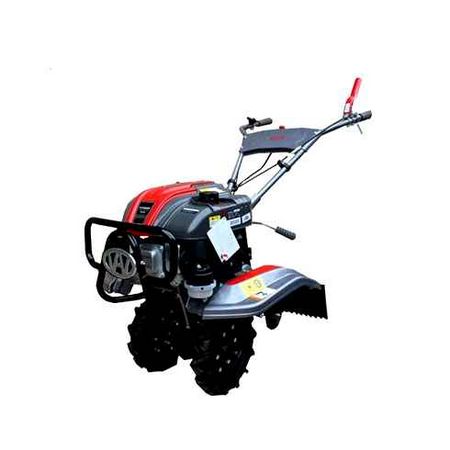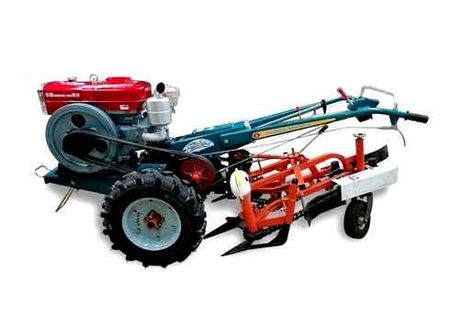A two-hoe plough for a power tiller with your own hands
How to make a plough
Before we start buying materials, we need to draw up a plan of the future product.
The focus should be on ease of construction, economy of materials and plough reliability. In most cases a single-hulled unit is enough to perform the task in a few steps. It looks like a profiled metal pipe with a working part attached at one end, on the other side the power unit plough is attached to the mini-tractor.
A two-hoe plough for a power tiller looks like a frame with the corresponding tools attached to it. A motor-block plough can do two jobs simultaneously. ploughing and harrowing. After completing the necessary schemes make a step-by-step plan for the manufacture of the product and purchase building materials. Before starting work, a cut is made that determines how many sheets of metal are needed.
It is recommended to make a two-hoe plough from high-strength alloy steel, this will provide the necessary rigidity, reduce fragility and protect against breakage. The shape of the blade is selected according to the types of tools available. In the conditions of the home workshop it is necessary to use a simple vice and anvil. The greatest precision can be achieved only with the help of professional plate-bending machines. Let’s get to work on building the unit.
- The first step is to cut out a sheet of metal, at least 5 mm thick, according to previously made patterns, then bend it step by step. How accurately this is done will dictate how well the plough is able to work the ground. A simpler method is also possible. Simply take a prefabricated piece of pipe or a tank, cut it according to the cutting pattern, and then bend it. The lower part of the mouldboard and the cutting part of the plough are reinforced by a metal strip 5 mm thick. This will increase the strength of the construction.
- The metal band is riveted or welded on, and then ground and polished. On the other side is a holder with a length of approx. 50 cm. Several fixing holes can be made in it, allowing you to work the ground at different depths. The plough body is made from profile pipe with a wall thickness of more than 4 mm. body length varies from 0.5 to 1 m depending on the number of attachments.
- To one end of the pipe a flange is attached so that the plow can be connected to the tractor. On the other side, the working part of the machine is bolted in place. For plough of complex construction it is necessary to install a guide wheel near the cutting part and an additional one on the back side. The carrier wheel should have a diameter of at least 20 cm, the auxiliary wheel should have a diameter of 10 cm. In relation to the axial mowing line, they should be positioned so that the structure is in equilibrium during tillage and the load on the tractor engine is minimal. The big wheel is mounted along the width of the plough‘s working part, the small one. on the back side by half of this distance.
Swivel plow for power tiller, homemade
Swivel plow. universal, used on power tillers, contains a manual swivel mechanism on a standard single hitch. As is known, when plowing the soil with a regular plough, a layer of earth is turned over to one side by a ploughshare in one pass. To turn the soil in the next row in the same direction one has to go back to the beginning of the previous row and start from the same side of the plot.
Rotary plow will allow you to plow much faster. at the end of the row you simply turn the ploughshare to the other side after turning the motoblock and continue tillage.

Rotary plough on a single axle tractor: advantages of the unit
It has the most advanced form for plowing of virgin lands, overgrown weeds at a depth of about 30 cm. Rotary homemade plow includes:
Single axle tractors used for this implement must have a working PTO. It’s the one that drives the axle, and it drives the plows.
Rotary plows on a single axle tractor in homemade version are most often found with disc mechanisms. But also known as drum, shovel and auger plows. Indispensable for fertilizer and weed control.
A plough for a power tiller with your own hands
a single-axle tractor is a multifunctional machine that helps farmers to perform a wide variety of farming tasks: mowing, planting crops, transporting goods, etc. д. But each operation requires special implements. For example, such common operations as plowing require a plow. With its help it is possible to work even heavy and virgin soil. Ready-made equipment is quite expensive, but you can make a plow for power tiller with your own hands. You will need a little patience, and also materials and tools that can be found in the workshop. Interestingly, in addition to agriculture, plows are also used for certain types of underwater work, for laying cable, and in the search for oil.
When to hill the potatoes?
If you get to know the purpose of loosening the soil, you must decide when it is best to do this.

How To Till A Garden Without A Rototiller Double Dig Gardening Method
Potato hilling should be done at the most appropriate time. The first time is after the first shoots have emerged. At the same time, they should be at least 5-7 cm high, so that the seedlings can be clearly seen above the ground.
Loosening the soil with a potato hoe should be done 2-3 times a season. Repeat the procedure when the bushes grow to twenty centimeters. It is recommended to do it in the evening or in cloudy weather so that there is no sun. Hot sunny days are not suitable for such a procedure, as on large unshaded areas the dipped parts of plants above the ground may burn.
Also it is necessary to loosen the soil after rains and heavy showers. After rainfall the soil surface becomes covered with a crust which prevents the penetration of oxygen into the ground. If you do not get rid of it in time, the plants will not develop well.
Before you use the potato mower, you should get acquainted with the peculiarities of loosening the soil.
First it is necessary to cut through the weeds on the plot where the potatoes are grown. The cut grass can be left on the plot to protect the potato bushes from the sun’s rays.
When all the weeds are plucked, you can start loosening the soil with a potato hoe, made with your own hands. This should be done in the evening or in cloudy weather. When loosening the soil, the plow is pulled twice between the rows of potatoes. If after using a manual device in some areas under the bushes there is a crust, you will have to get rid of it manually with an ordinary sap.